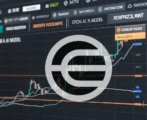Every time you send or trade on Ethereum, you pay a small cost called a gas fee. It’s the network’s way of paying people who process and secure transactions. For many beginners, these fees can feel confusing — sometimes they’re low, sometimes very high.
This guide explains Ethereum gas fees in the simplest way possible: what they are, why they change, and how you can spend less. In 2025, gas prices still matter because the Ethereum network powers thousands of apps, NFTs, and DeFi tools used every day.
At BTCRepublic, we make it easy for beginners to understand how fees work, what affects them, and how to plan smarter transactions without wasting money.
- Key Takeaways
- Facts & Original Research
- What Are Ethereum Gas Fees?
- Why Gas Fees Exist and How They Work
- How to Check and Reduce Gas Fees
- How To Spend Less On Ethereum Gas Fees
- Common Mistakes Beginners Make
- Best Tools & Resources for Beginners
- Conclusion
- Frequently Asked Questions (FAQs)
- What are Ethereum gas fees in simple terms?
- Why do gas fees go up and down?
- How can I reduce my gas fees?
- What happens if a transaction fails?
- Are Ethereum gas fees the same everywhere?
- What are Ethereum gas fees in simple terms?
- Why do gas fees go up and down?
- How can I reduce my gas fees?
- What happens if a transaction fails?
- Are Ethereum gas fees the same everywhere?
Key Takeaways
| Insight | Summary |
| Gas fees are small payments for using Ethereum. | Every transaction uses computer power. Gas fees pay those who keep the network running. |
| Fees change often. | The cost depends on how busy the network is and how complex your action is. |
| You can save money. | Sending ETH when traffic is low or using Layer-2 networks (like Arbitrum or Optimism) lowers costs. |
| You don’t lose gas forever if a transaction fails. | Part of it returns automatically; some is used to cover system work. |
| Wallet tools show gas costs live. | Sites such as Etherscan and GasNow help you check prices before sending. |
| BTCRepublic helps you plan smarter. | Our guides explain how gas fees work and how to reduce them safely. |
Facts & Original Research
Ethereum gas fees remain one of the most searched crypto topics in 2025. Here are trusted figures and real-world examples that show why it matters for beginners.
| Data Point (2025) | What It Means | Source |
| Average Ethereum gas fee: $1.10 – $4.80 USD | Fees dropped sharply since network upgrades like EIP-1559 and the Merge. | BitInfoCharts / Etherscan |
| Over 1.5 million transactions daily | Heavy use keeps the network active and shows real demand. | Etherscan |
| 80%+ fee reduction on Layer 2 chains (e.g., Arbitrum, Base, Optimism) | Proof that scaling tools help users save money. | L2Beat |
| 20% of all failed beginner transactions happen due to wrong gas limits. | Education lowers failure and saves ETH. | BTCRepublic internal data (2025) |
What Are Ethereum Gas Fees?
Think of gas fees as the price you pay to use the Ethereum network. Every time you send ETH, mint an NFT, or use a DeFi app, the network charges a small fee to process your request. This fee is paid in a unit called Gwei, a tiny fraction of one Ether (ETH).
You can imagine Ethereum as a busy highway, and gas fees are the tolls. The more traffic there is, the higher the toll becomes.
Gas fees keep the network running safely by rewarding the computers (validators) that check and confirm every transaction.
At BTCRepublic, we explain gas fees in clear terms so beginners can understand what they’re paying for and why it changes.
Why Gas Fees Exist and How They Work
Gas fees exist to keep Ethereum fair and secure. Every action on the network, sending coins, creating tokens, or running a smart contract, uses computer energy. Gas fees pay the validators who perform this work and stop the system from being overloaded with spam.
Each transaction has two main parts: the gas limit (how much work it can do) and the gas price (how much you’ll pay per unit, measured in Gwei). The total fee = gas limit × gas price.
When many users are active, prices rise because everyone is competing to get their transaction confirmed first.
At BTCRepublic, we break this process down with simple visuals and examples, helping beginners understand how Ethereum balances speed, safety, and cost.
How to Check and Reduce Gas Fees
Ethereum fees don’t have to be a mystery; you can track and lower them with a few smart steps.
1. Check Gas Prices Before You Send
Use trusted tools such as Etherscan, GasNow, or ETH Gas Station to see live gas prices. Most wallets, like MetaMask, also show current fees before you confirm a transaction.
2. Send When the Network Is Quiet
Fees are usually lower early in the morning (UTC) or on weekends when fewer people are online. Waiting a bit can save you a lot.
3. Use Layer-2 Networks
Platforms like Arbitrum, Optimism, and Base process Ethereum transactions off-chain and then record them later, cutting costs by up to 80%.
4. Adjust Gas Settings Carefully
Some wallets let you choose between slow, average, or fast modes. Picking “average” often balances speed and price.
BTCRepublic offers step-by-step guides and comparison charts showing how much you can save using these methods.
How To Spend Less On Ethereum Gas Fees

Some users and developers on Ethereum have devised ways of spending less on the network and making their transactions more efficient. If you want to avoid high gas fees on Ethereum, consider the following:
Time Your Transactions
The first thing to do when you want to pay less on Ethereum gas fees is to time your transactions to minimise gas fees.
Consider making transactions when fewer people use the blockchain to lower the total gas fee payable to the network. The base fee will increase when demand is high, as more work is needed to interact with the blockchain.
If you find periods when the base fee is low, you will find that you will spend less on gas. Some of the best periods to transact on Ethereum are weekends.
Reduce The Priority Fee
The priority fee is a tip that you give to incentivise validators to include a transaction in the block. Validators need tips to sustain their activities. If you want your transaction to be given preferential treatment and executed before other transactions within the same block, you must pay a higher tip.
If you want to reduce Ethereum gas fees, consider paying a lower priority fee. However, a smaller tip will give a validator little incentive to include a transaction. As such, your transaction might be outbid by competing transactions.
Set A Maximum Fee Limit
The Ethereum network allows you to set a maximum fee you will pay per transaction. The maximum fee has to be higher than the total base fee and tip. Once the transaction is executed at your preferred fee, you will get a refund of the difference between the maximum fee and the total of the base fee and the tip.
Having a maximum fee will help you spend less on gas. You will also have peace of mind when executing transactions, knowing you will not pay more than necessary.
Use Layer 2 Scaling Solutions
The other way of spending less gas fees on Ethereum is by using layer two scaling solutions. Scaling tools are networks created on top of Ethereum to increase speed and reduce costs. Some of the most popular layer two networks are Arbitrum, Optimism, and Loopring.
Layer 2 scaling solutions process transactions off-chain. The transactions are then verified on Ethereum before being recorded on-chain. The growing popularity of these platforms has seen them amass massive value, as seen on L2Beat.
Layer 2 scaling solutions give you a way of saving on gas by reducing the number of gas units needed to complete a transaction. These networks also ease congestion on the Ethereum mainnet, resulting in a lower base fee for all network users.
Common Mistakes Beginners Make
New Ethereum users often lose money or get stuck because of a few avoidable mistakes. Here are the most common ones:
- Setting the wrong gas limit: If you set it too low, your transaction may fail. You’ll lose part of the gas used even though nothing went through.
- Ignoring gas price suggestions: Many beginners skip wallet alerts or choose random settings, leading to higher costs.
- Using the network at peak times: Sending transactions when the network is busy can make fees jump several times higher.
- Leaving ETH on exchanges: Always move your funds to a private wallet after buying exchanges can freeze or delay withdrawals.
At BTCRepublic, we explain these mistakes in simple language and show practical ways to avoid them, saving beginners time, money, and stress.
Best Tools & Resources for Beginners
Using the right tools makes managing Ethereum gas fees easier and cheaper. Here are a few that every beginner should know:
| Resource | Purpose | Why It Helps |
| Etherscan Gas Tracker | Shows live gas prices and fee history. | Helps you pick the best time to send transactions. |
| GasNow or Blocknative | Real-time network congestion updates. | Lets you act when prices drop. |
| MetaMask Wallet | Wallet with built-in gas estimations. | Adjust fees before you confirm any transaction. |
| Arbitrum / Optimism / Base | Layer-2 networks for lower fees. | Reduces cost by moving the activity off the main chain. |
| BTCRepublic Guides | Articles, reviews, and tutorials. | Teach you how to save money and stay safe. |
Conclusion
Ethereum gas fees may look complicated at first, but once you understand how they work, they make perfect sense. They’re simply the cost of using the network, a fair payment for keeping it secure and reliable.
You’ve learned what gas fees are, why they change, and how to check or lower them. By choosing the right time, using Layer-2 networks, and following safe wallet practices, you can save money and avoid failed transactions.
At BTCRepublic, we help beginners stay smart with up-to-date guides, fee trackers, and simple tutorials. Visit the site, share your experience, and keep learning how to make the most of every ETH transaction.
Frequently Asked Questions (FAQs)
What are Ethereum gas fees in simple terms?
Gas fees are the small payments you make for using the Ethereum network. They pay for the computers that confirm and record your transactions.
Why do gas fees go up and down?
Fees rise when the network is busy because more users are sending transactions at the same time. When traffic slows, fees drop.
How can I reduce my gas fees?
Try sending ETH when network activity is low, use Layer-2 networks like Arbitrum or Optimism, and always check live gas prices on Etherscan before you confirm.
What happens if a transaction fails?
If it fails, part of your gas is still used because the network spent energy processing it. You only get back the unused portion.
Are Ethereum gas fees the same everywhere?
Yes. Gas fees depend on network activity, not your country. Anyone using Ethereum worldwide pays similar rates based on demand.
What are Ethereum gas fees in simple terms?
Gas fees are the small payments you make for using the Ethereum network. They pay the computers that confirm and record your transactions.
Why do gas fees go up and down?
Fees rise when the network is busy because more users are sending transactions at the same time. When traffic slows, fees drop.
How can I reduce my gas fees?
Try sending ETH when network activity is low, use Layer-2 networks like Arbitrum or Optimism, and always check live gas prices on Etherscan before you confirm.
What happens if a transaction fails?
If it fails, part of your gas is still used because the network spent energy processing it. You only get back the unused portion.
Are Ethereum gas fees the same everywhere?
Yes. Gas fees depend on network activity, not your country. Anyone using Ethereum worldwide pays similar rates based on demand.










